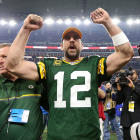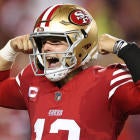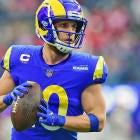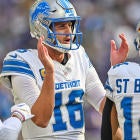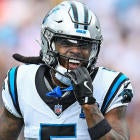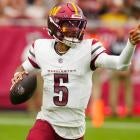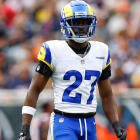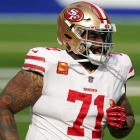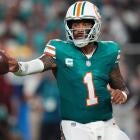Quarterback is the most important position in football and there isn't a close second. This isn't some groundbreaking truth -- everyone knows it -- but the fact that teams are perpetually searching for the next great passer reinforces just how hard they are to find.
This explains the year-round scouting efforts and the national-security-clearance-type scrutiny these quarterbacks endure as they go from college standouts to NFL face-of-the-franchise candidates. The process can be a grind and it doesn't end once the player is drafted. In fact, it's not uncommon for flaws flagged as concerns during the scouting process to metastasize at the next level, where defenders are faster, stronger and smarter.
But the NFL Draft remains as much art as science, which means a good deal of luck is involved in unearthing the Next Big Thing. With that in mind, here's a look at the five best and five worst quarterback draft classes going back to the 2004 class that included three future Hall of Famers -- Eli Manning, Ben Roethlisberger and Philip Rivers -- who are still among the league's best passers. For our purposes here, we'll look at quarterbacks taken in the top three rounds, since that's when franchise passers are generally found, though for completeness we'll make mention of notable names drafted after the third round.
Let's get to it.
Five best quarterback classes since 2004
1. 2004
- 1st round: Eli Manning (No. 1), Philip Rivers (No. 4), Ben Roethlisberger (No. 11), J.P. Losman (No. 22)
- 3rd round: Matt Schaub (No. 90)
- Other notable names: Luke McCown (4th round)
Manning and Roethlisberger have two Super Bowl rings each, with Big Ben winning his first in his second season. Meanwhile, two years later, Manning and an upstart Giants outfit took down the 18-0 Patriots. Rivers has been prolific but unlucky during his career. He's led the Chargers to five postseason appearances -- none since 2013 -- including one AFC Championship Game following the 2007 season. The Chargers lost to the aforementioned undefeated Patriots. The Bills traded up for J.P. Losman and he started 16 games just once during his seven-year career -- the team went 7-9 in 2006. Matt Schaub went 46-42 during seven years with the Texans, including a 12-4 record in 2012.
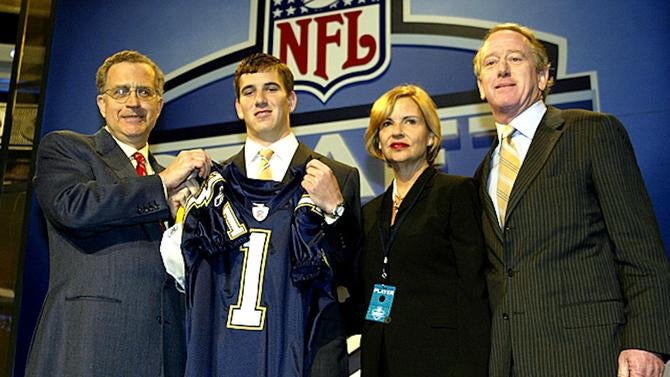
2. 2005
- 1st round: Alex Smith (No. 1), Aaron Rodgers (No. 24), Jason Campbell (No. 25)
- 3rd round: Charlie Frye (No. 67), Andrew Walter (No. 69), David Greene (No. 85)
- Other notable names: Kyle Orton (4th round), Dan Orlovsky (5th round), Derek Anderson (6th round), Matt Cassel
Consider this: Alex Smith was 19-32 during his first five seasons in San Francisco. Then Jim Harbaugh arrived, and Smith and the 49ers promptly went 13-3. By the time he was benched a year later, midway through the 2012 season, Smith had amassed a 38-36-1 record. That success continued when he was traded to Kansas City in the offseason and in the four years since, Smith has gone 41-20 with the Chiefs. There's no one thing about Smith's game that would be described as exciting but he does exactly what he's asked to do and the results have been a lot of winning. Aaron Rodgers has clearly had the better career -- one that includes a Super Bowl following the 2010 season -- and he's still one of the NFL's top two or three quarterbacks. Jason Campbell's career might have turned out differently had there not been "a whole bunch of crazy going on" in Washington. Third-rounders Charlie Frye, Andrew Walter and David Greene had brief stints in the league but Kyle Orton, Dan Orlovsky, Derek Anderson and Matt Cassel were all successful as starters and in backup roles.
3. 2008
- 1st round: Matt Ryan (No. 3), Joe Flacco (No. 18)
- 2nd round: Brian Brohm (No. 56), Chad Henne (No. 57)
- 3rd round: Kevin O'Connell (No. 94)
- Other notable names: Matt Flynn (7th round)
Back in 2013, shortly after the Ravens beat the 49ers in the Super Bowl -- and as the Falcons weren't living up to their postseason potential -- there were conversations that Joe Flacco was a better quarterback than Matt Ryan. That talk subsided a short time later but both players are legit franchise talents and invaluable to their respective organization's success. Flacco has his Lombardi Trophy, and even though Ryan missed out on his in February, he had an MVP season completing 70 percent of his passes for 4,944 yards, 38 touchdowns and just seven interceptions. Chad Henne never made it as a starter but he was a reliable backup, and Matt Flynn essentially parlayed one good game with the Packers into a a three-year, $26 million deal with the Seahawks.
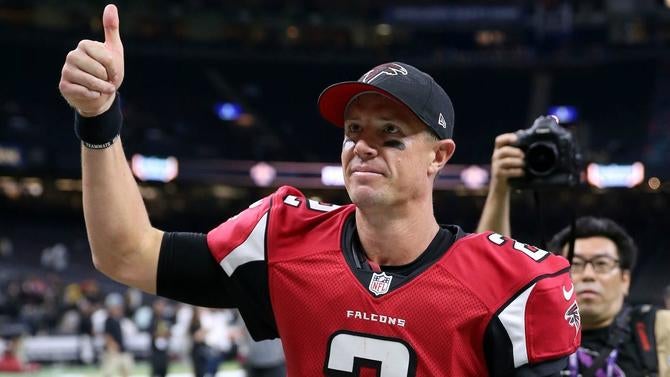
4. 2012
- 1st round: Andrew Luck (No. 1), Robert Griffin III (No. 2), Ryan Tannehill (No. 8), Brandon Weeden (No. 22)
- 2nd round: Brock Osweiler (No. 57)
- 3rd round: Russell Wilson (No. 75), Nick Foles (No. 88)
- Other notable names: Kirk Cousins (4th round)
No group of rookie first-rounders got off to hotter starts than Luck and RG3. The Colts went from a two-win circus in 2011 to an 11-5 playoff team during Luck's first year in the league. And the Redskins, an outfit that featured Rex Grossman and John Beck during a five-win 2011 season, improved to 10-6. That included seven straight wins to end the regular season to win the division and qualify for the playoffs with Griffin under center. And while Luck continued to play like the league's next young bright star -- the Colts would go 11-5 over the next two seasons -- Griffin never again rediscovered his 2012 form. Injuries and inconsistency were his downfall and after a disappointing 2016 season in Cleveland he remains a free agent. Ryan Tannehill had his best season in 2016 under new coach Adam Gase while Brandon Weeden was set up to fail the moment the Browns drafted him. Brock Osweiler looked like a decent prospect until he left Denver for Houston following the 2015 season. Russell Wilson could turn out to be the best quarterback in this class and Nick Foles is a capable backup and occasional starter. Kirk Cousins replaced RG3 in Washington and will probably be the league's highest-paid player at some point in the coming months.
5. 2011
- 1st round: Cam Newton (No. 1), Jake Locker (No. 8), Blaine Gabbert (No. 10), Christian Ponder (No. 12)
- 2nd round: Andy Dalton (No. 35), Colin Kaepernick (No. 36)
- 3rd round: Ryan Mallett (No. 74)
- Other notable names: Tyrod Taylor (6th round), Terrelle Pryor (3rd round, supplemental draft)
Cam Newton and Andy Dalton are the jewels of this class -- and it's worth remembering that both players were thrust into the starting lineups as rookies, even though that summer's NFL lockout meant they couldn't take part in official offseason workouts with their respective teams. Still, both players excelled in Year 1. Newton started 16 games, completed 60 percent of his passes with 21 touchdowns and 17 interceptions. Dalton also started 16 games and completed 58 percent of his passes with 20 touchdowns against 13 interceptions. In terms of career records, Newton is 51-40-1 and Dalton is 56-35-2. Jake Locker, Blaine Gabbert and Christian Ponder are all cautionary tales about why it's so incredibly difficult to evaluate college quarterbacks and project how they will play in the NFL. Colin Kaepernick's NFL success seems tied to Jim Harbaugh's arrival -- and departure -- in San Francisco. Tyrod Taylor spent the early part of his career sitting behind Joe Flacco in Baltimore, but has thrown 37 touchdowns and just 12 interceptions while starting 28 games for the Bills the last two seasons.
Five worst quarterback classes since 2004
1. 2007
- 1st round: JaMarcus Russell (No. 1 overall), Brady Quinn (No. 22)
- 2nd round: Kevin Kolb (No. 36), John Beck (No. 40), Drew Stanton (No. 43)
- 3rd round: Trent Edwards (No. 92)
- Other notable names: Matt Moore (undrafted free agent)
There isn't much to say here: Despite his prodigious physical talents, JaMarcus Russell turned out to be the biggest bust of this century. The football gods showed the Raiders mercy seven years later with Derek Carr, but the Russell Era was a dark time in what was already a depressing stretch for the organization. Brady Quinn, like every other Cleveland quarterback before or since, struggled mightily. Kevin Kolb showed promise in Philadelphia but his career was cut short by concussions. Drew Stanton found his niche as a backup, as did undrafted free agent Matt Moore.
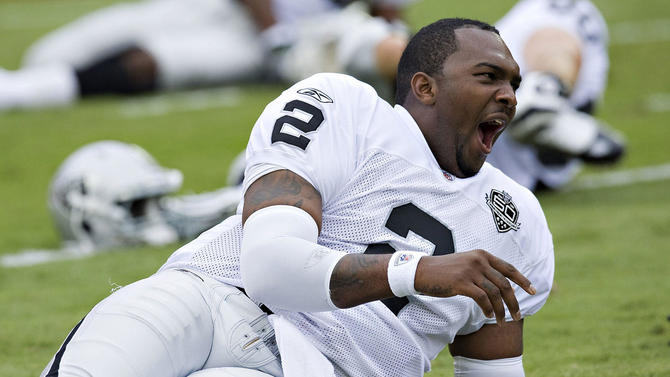
2. 2013
- 1st round: EJ Manuel (No. 16)
- 2nd round: Geno Smith (No. 39)
- 3rd round: Mike Glennon (No. 73)
The Bills traded up for EJ Manuel and the former Florida State standout started 10 games as a rookie. Over the next three seasons, Manuel combined to start seven more, which should give you a clear indication of how little he progressed in Buffalo. He is now a backup in Oakland. Geno Smith was talked about as a first-round talent but he lasted until early in the second round. The plan was for him to eventually unseat Mark Sanchez, the Jets' 2009 first-round pick who had fallen out of favor in recent years. In a glaring case of "be careful what you ask for," a preseason injury sidelined Sanchez and Smith started all 16 games as a rookie. The Jets went 8-8 but Smith tossed 21 interceptions against just 12 touchdowns, and after going 3-10 in 2014 Smith was benched. Mike Glennon has the most remaining upside of this group but for how long is anyone's guess; signed this offseason to be the Bears' starter, the team promptly traded up in the draft to select Mitchell Trubisky with the No. 2 pick.
3. 2009
- 1st round: Matthew Stafford (No. 1), Mark Sanchez (No. 5), Josh Freeman (No. 17)
- 2nd round: Pat White (No. 44)
- Other notable names: Brian Hoyer (undrafted free agent)
Thank God for Matthew Stafford, otherwise the '09 class might challenge the '07 class for worst on this list. Stafford arrived in Detroit after the team's forgettable 0-16 campaign in 2008. By 2011, which was the first season Stafford started all 16 games, the Lions qualified for the playoffs. He completed 64 percent of his throws for 5,038 yards, 41 touchdowns and 16 interceptions. Detroit made the postseason again in 2014 and 2016, though Stafford is 0-3 in those games. Mark Sanchez was the beneficiary of a strout run game and the NFL's best defense during his first two seasons, and both times the Jets made it all the way to the AFC title game. Sanchez went 14-17 over the next two seasons before a preseason injury put him on the shelf for all of 2013. Coming out of Kanas State, Josh Freeman was compared to Ben Roethlisberger. There were glimpses of potential early in his career -- including the 3,451-yard, 25 touchdown, six interception performance during his second season -- but the totality of his career is best described by one word: Bust. The Bucs traded him during the 2013 season and by 2016 he was out of the league. Pat White was drafted to compete with Chad Pennington and Chad Henne for the starting job though he never attempted a regular-season pass. Instead, he was used in the wildcat formation before he was released before the start of the 2010 season.
4. 2010
- 1st round: Sam Bradford (No. 1), Tim Tebow (No. 25)
- 2nd round: Jimmy Clausen (No. 48)
- 3rd round: Colt McCoy (No. 85)
Sam Bradford struggled with injuries early in his career but still put up better-than-replacement-level numbers during his four years with the Rams where he went 18-30-1 but completed 59 percent of his throws with 59 touchdowns and 38 interceptions. Bradford was traded to Philly ahead of the 2015 season and he threw for 3,725 yards (65.0 completion percentage, 19 TDs, 14 INTs), But when the Eagles drafted Carson Wentz, Bradford was expendable and he was shipped to Minnesota weeks before the 2016 season where he promptly put up the best numbers of his career: 15 starts, 71.6 completion percentage, 3,877 yards, 20 TDs, 5 INTs and a 99.3 passer rating. Tim Tebow won a playoff game. This is a true statement though you could argue that the Broncos accomplished the unlikely feat in spite of Tebow. During his three-year career, he completed just 48 percent of his throws and had a 75.3 passer rating. Jimmy Clausen was drafted a year before the Panthers took Cam Newton. That team won just twice. Clausen made 10 starts, going 1-9 and completing 53 percent of his passes with three touchdowns and nine interceptions.
5. 2006
- 1st round: Vince Young (No. 3), Matt Leinart (No. 10), Jay Cutler (No. 11)
- 2nd round: Kellen Clemens (No. 49), Tarvaris Jackson (No. 64)
- 3rd round: Charlie Whitehurst (No. 81), Brodie Croyle (No. 85)
- Other notable names: Bruce Gradkowski (6th round)
Vince Young and Matt Leinart were two of college football's most exciting quarterbacks but neither could translate that success to the next level. Young did go 8-5 as a rookie starter and 9-6 in Year 2 (which included a playoff appearance) but his lack of consistency in the passing game was too much to overcome. In 2008, a Week 1 injury sidelined him for a few weeks, paving the way for Kerry Collins, who helped the Titans to a 13-3 record while Young served as a backup. Leinart never could win the job outright in Arizona and he eventually lost it to Kurt Warner in 2008, the same season the Cardinals made it to the Super Bowl. Leinart later was a backup in Houston and Oakland and was out of the league by 2013. Cutler is the best of the bunch though he too never lived up to expectations. He played in just five games last season because of injury, but in 2015, he ranked ninth in value per play among all quarterbacks, according to Football Outsiders, which was better than Matthew Stafford and league MVP Cam Newton. But that was the anomaly for Cutler, who regularly put up replacement-level numbers during his Chicago career. He retired this offseason and he'll join Fox Sports' No. 2 broadcast team for 2017.








